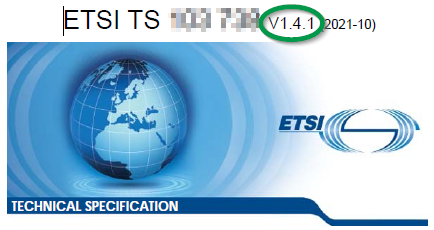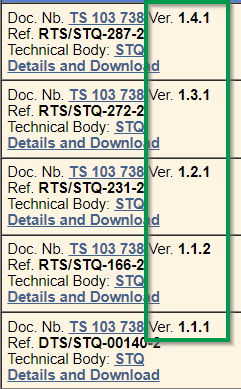Version numbering system
Version numbering is the assigning of unique version numbers to unique states of ETSI deliverables. Within a given version number category (major, technical and non-technical), these numbers are assigned in increasing order and correspond to new developments in the deliverable. It applies to all ETSI deliverable types.
Each Technical Group or Industry Specification Group has its own way of numbering. However, as the deliverables are exchanged several times between various people, it is important to ensure that the numbering is consistent within the deliverables.
Ideally, the first draft of a deliverable should be version 0.0.1, and each time the draft is reviewed, its version number is incremented. See examples below:
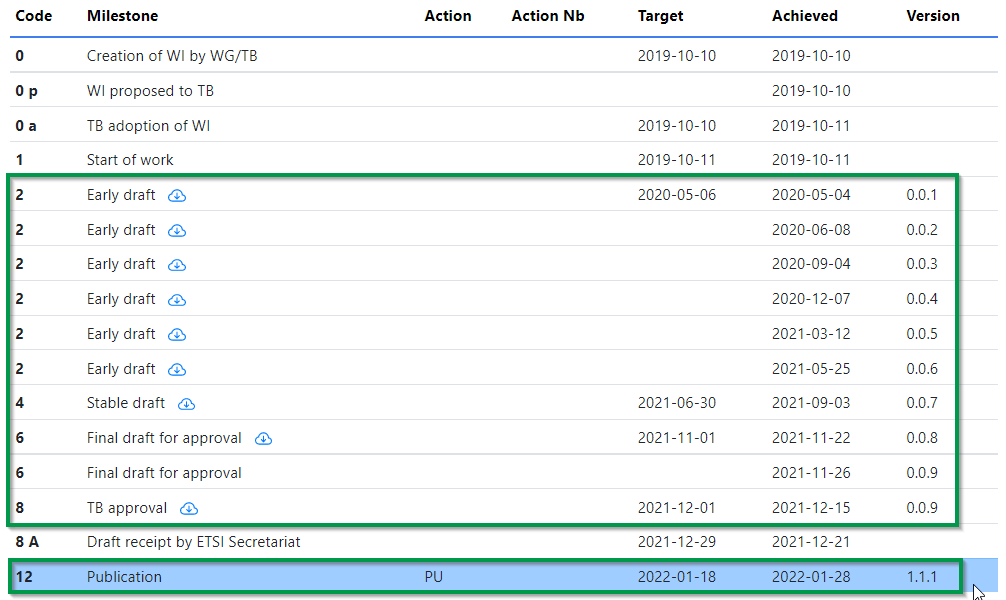

Therefore, when a deliverable is published, its version number is increased. Version numbers should never go backwards:
The position of the digit is determined by our most common, widely-used system, also given in Annex B of the Technical Working Procedures, contained in the ETSI Directives, based on three types of changes made within a deliverable (see figure 1), which are:
major increased for a major new version or for release Identification;
technical increased when technical changes are made;
non-technical increased when non-technical changes (also known as editorial) are made.

Figure 1
When changes are made during the drafting phase, the consecutive version numbers of the draft will increase depending on the type of changes applied (see figure 2).

Figure 2
Ideally, the first final published version of a deliverable should be v1.1.1.
Subsequent final published deliverables will increase the first, second, or third digit of the version number (1.x.x, 2.x.x, etc.) or (1.1.x, 1.2.x, etc.) or (1.1.1, 1.1.2, etc.) (see figure 3).
The revisions of published deliverables will increase the first, second, or third digit of their version number depending on the type of changes applied.
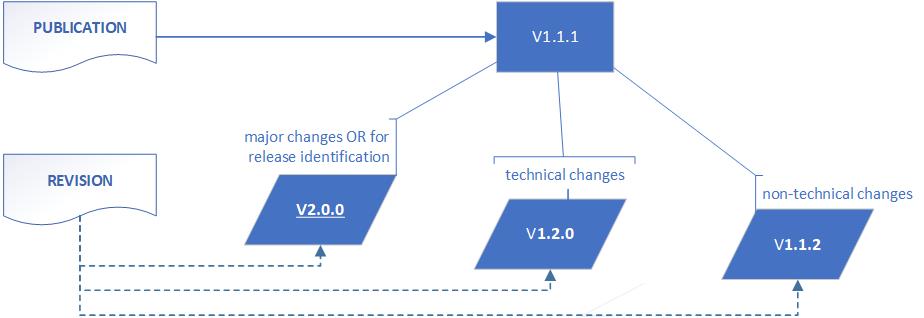
Figure 3
Any updates made to a published deliverable when it is under revision (drafting stage) will increase the first, second, or third digit of their version number. This, again, depends on the type of changes applied. The schedule of figure 1 quite clearly demonstrates this statement (also see figure 4).
Intermediate versions
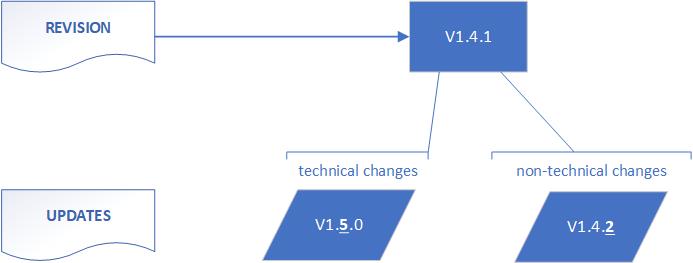
Figure 4
